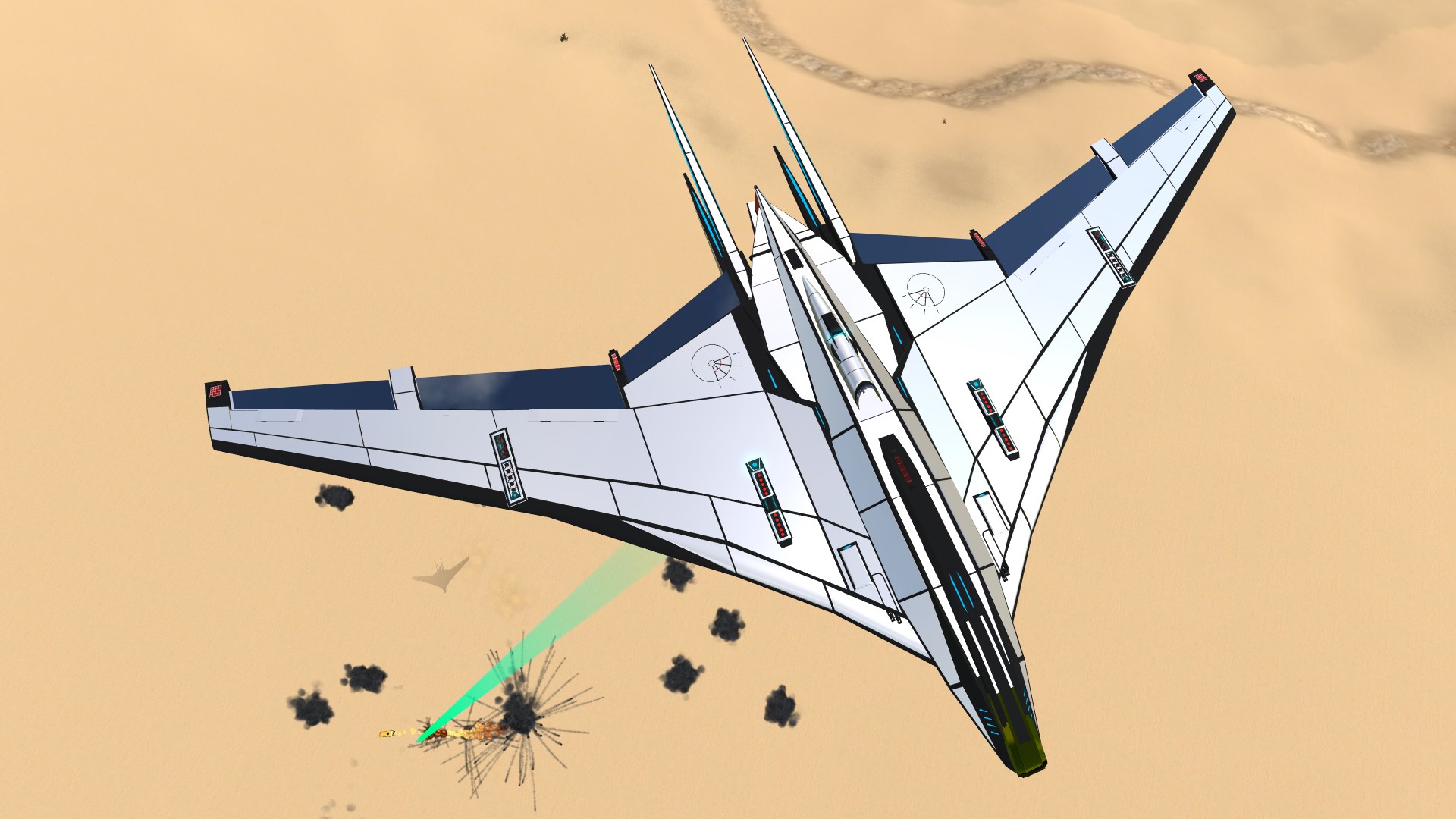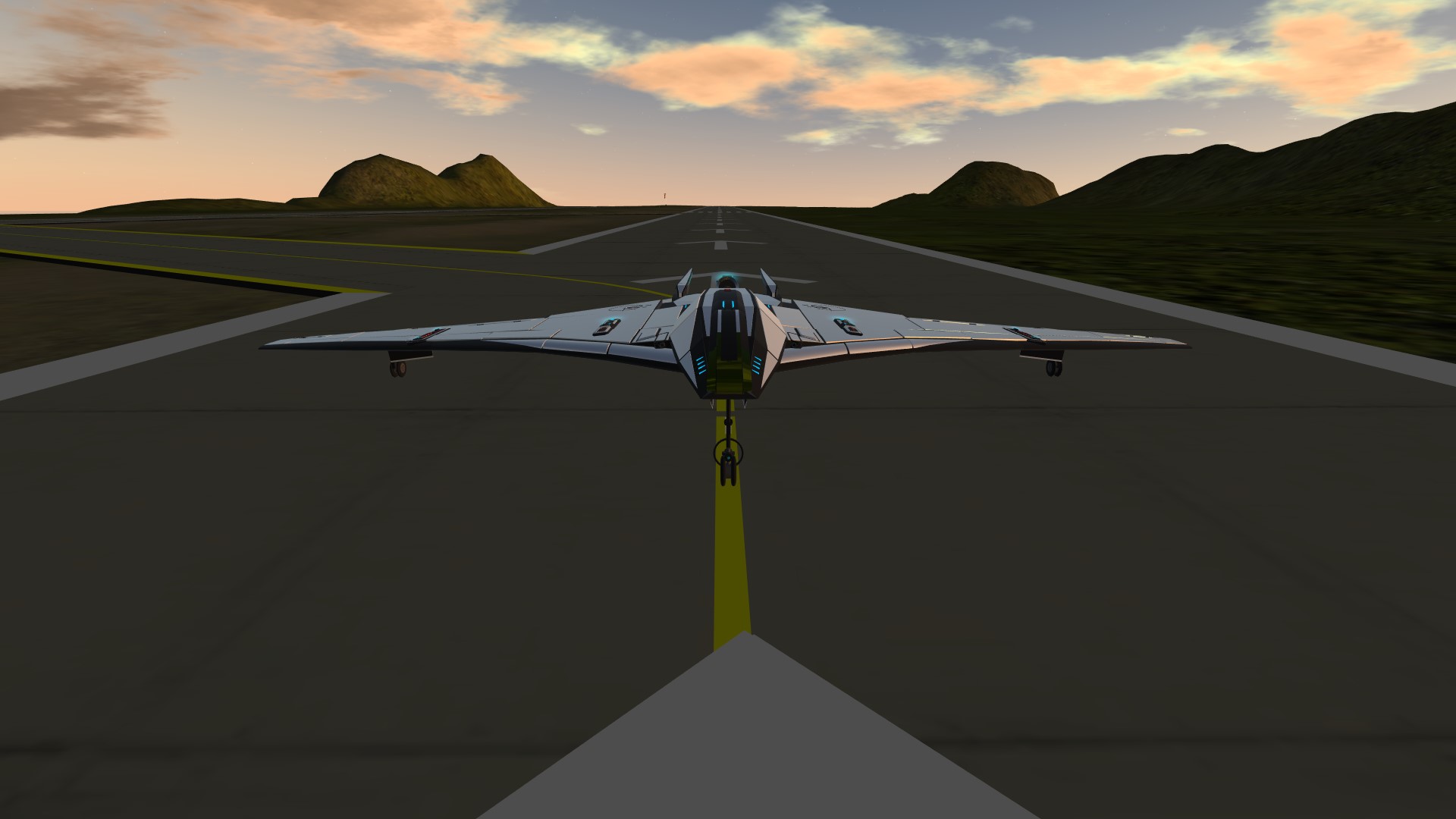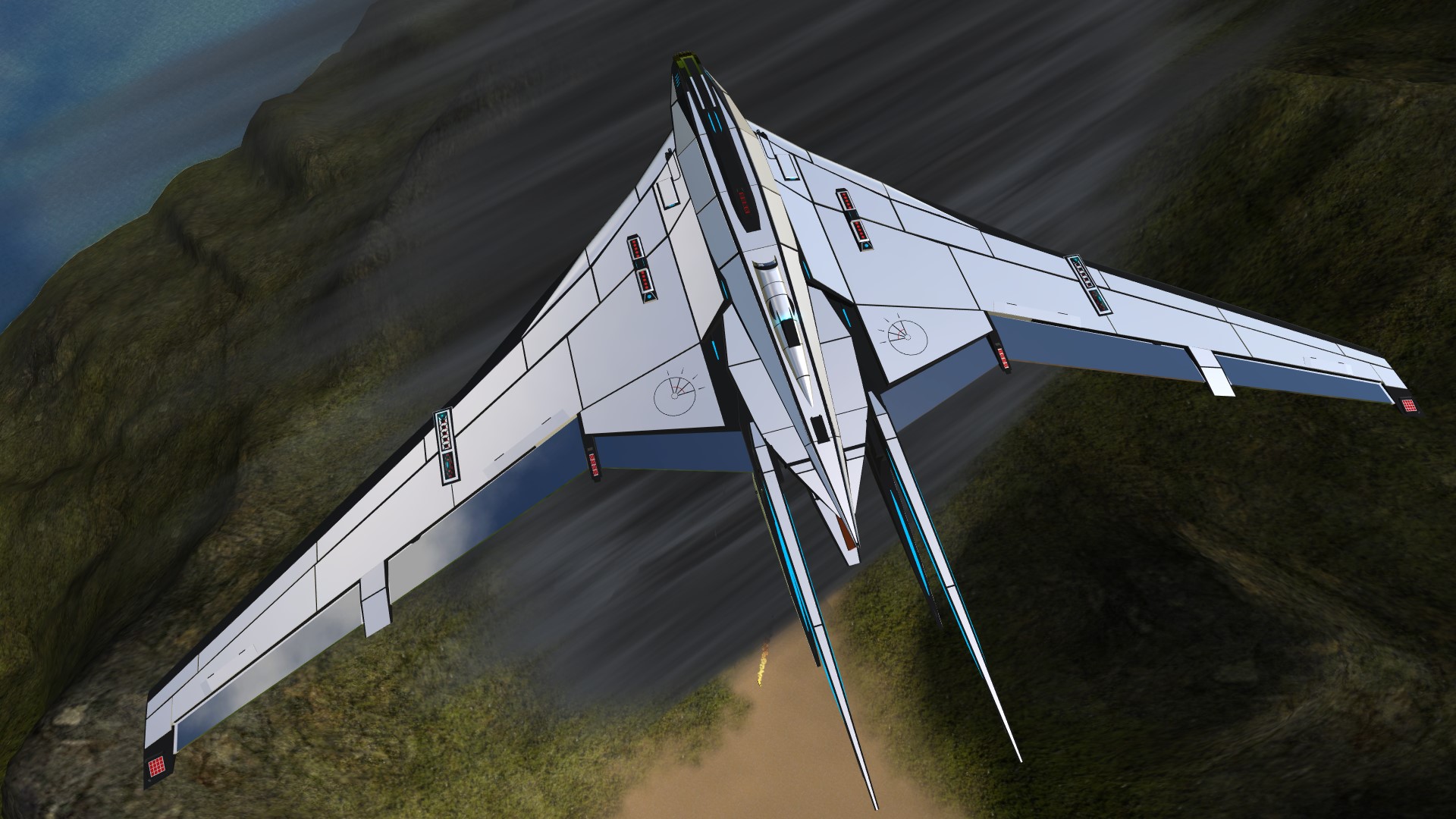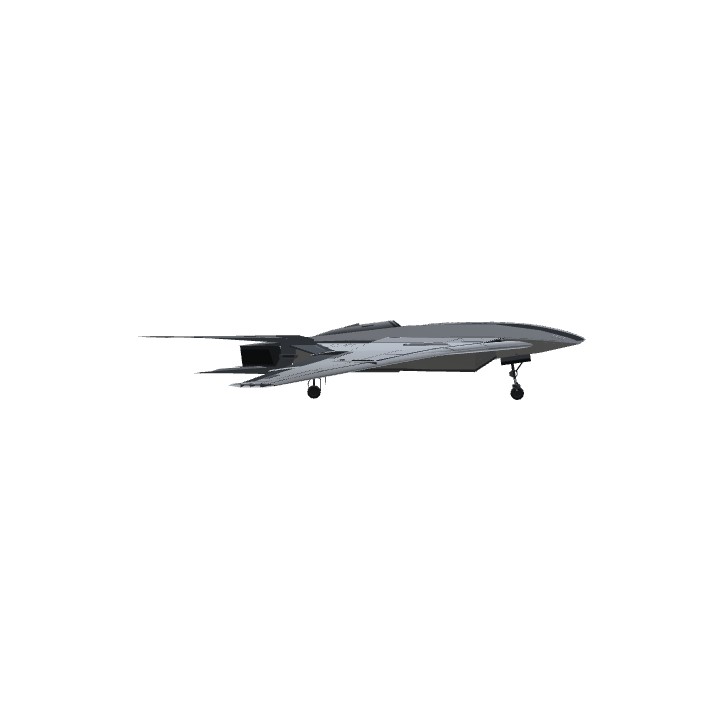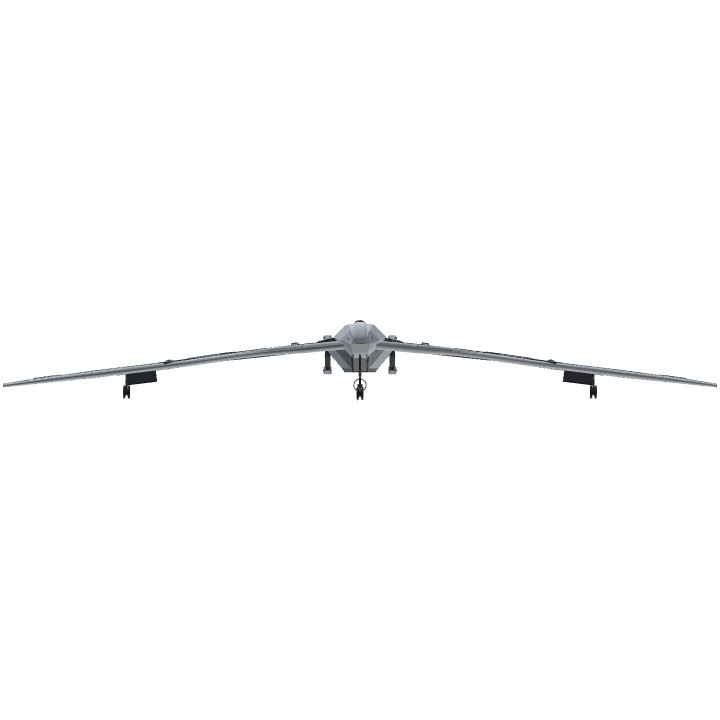Testing the photos. Do they look good? The second one is supposed to have a higher perspective (I messed up). Also I plan to have a different orientation (horizontal flip) on the first picture.
Controls
VTOL: Open/close doors and lower/raise gun
Ag1: Activate gyro and gun (control gun with pitch/roll)
Ag8: De-activate control surfaces (use when using the gun)
Ag2: Activate ATA missiles
Ag3: Activate ATG missiles
Ag7: Gun lights
Using the gun
Roll/pitch to orient
fireGuns for laser
Launch boom 50 for cannon shot
DESC TEST
“Tenet One – Regardless of the size or power of my prey, I will always be the hunter.”

Possibly my most powerful aircraft for ATG combat. Special thanks to SPMC for miscellaneous suggestions, especially @Mod for suggesting the wing anhedral.
Basic Controls
VTOL: Open/Close gun bay doors
Activator 1: Gunship mode (Activates gun, and stabilizes the aircraft)
Activator 2: IMPULSE PRIME ATA missiles online
Activator 3: REFLEX ATG missiles online
Activator 7: Activate gunsight lights
Activator 8: De-activate control surfaces (useful when in gunship mode)
Tips
- Taking off is automatic. No need for pitch input.
- Activator 1 and 8 pair well.
- The heavy “Imperon” gun can be oriented with pitch and roll

Imperon – Heavy Vortex Gun
Fires high-yield explosives at slow velocities. Drop a boom 50 to fire.
Imperon – Heavy Laser System
A laser system that can take down almost any ground target. Minimum range is about 0.7 mi, and maximum range is over 12.5 mi. Aiming is difficult at long range. Fire like any gun.
Imperon – Misc. Controls and Tips
Activator 1 activates the Imperon gun. Pitch and roll orients the gun. Remember to de-activate the control surfaces!
You may have to lead your target when using the explosives. The laser aims oddly at long (>4mi) range.
IMPULSE PRIME
ATA missiles that ignore countermeasures by instantly re-acquiring a lock. Added multitarget functionality at the cost of range. Bring them online by activating group 2. Fire by launching guardian missiles.
REFLEX Systems
Instant-locking ATG missiles. Rapid-fire capability at the cost of missile speed and range. Bring them online by activating group 3. Fire by launching guardian missiles.
Orbid Alpha refers to a flying wing attack aircraft developed by a former subdivision of SPEcorp’s PROJECT division, Orbid Dynamics. Formed during the design process of the aircraft, Orbid Dynamics was established for purely clerical/bureaucratic reasons. The company is now an independent entity with loose ties to SPECorp, and therefore avoids regulations imposed by SPEcorp; this division exercises a right to, unlike SPEcorp, seldom limit itself in weapon efficacy. Therefore, Orbid Dynamics designs vehicles with weaponry surpassing regulations set within SPEcorp’s corporate framework.
Orbid Alpha was the new company’s first design. Using resources supplied by SPEcorp, the emerging company designed its first (or alpha) project to deliver a ruthlessly effective ground attack vehicle. Moreover, Orbid Alpha’s weapon systems excel at long range, further making confrontation decidedly one-sided.
This goal was accomplished by engineering the aircraft around an independently-designed weapons system, known as Imperon. With a long-range laser system, as well as a vortex system surpassing Heavy Vortex PRIME in yield, the Imperon Integrated Heavy Combat System (IHCS) presented a valuable opportunity for a vehicle to dominate in an air-to-ground combat scenario. Additional tactical systems (that being, IMPULSE PRIME and REFLEX systems), were added for increased combative versatility.
Here’s some flawed math that I tried to justify.
A secondary goal of the Orbid Alpha project was to streamline a known fuel-efficient propulsion system, that rotates modified (fuel efficient) thrusters to simulate throttlability. This method had, in all other documented instances before Orbid, been implemented haphazardly. The effective thrust, which can be described by the product of the sine of the rotator angle and the thrust (remains constant due to loss of traditional throttlability in fuel-efficient modification), was not adequately reflected by the throttle percentage. At 50% throttle, for example, the effective thrust would be equal to about 71% of the maximum thrust.
This problem was addressed by matching the 50% throttle mark with the angle that would yield an effective thrust equal to one half of the maximum thrust (not the maximum effective thrust - this was an error). This angle was 30 degrees, as the sine of 30 degrees is one half. Therefore, the maximum angle was set to two-times this angle, or 60 degrees. It was assumed that the effective thrust generated by this angle would be roughly equal to the standard maximum thrust. Unfortunately, this assumption was incorrect, as the maximum effective thrust was reduced through the angle imposed angle limitation. Calculations estimate that, at 50% throttle, the effective thrust would equal about 58% of maximum. Therefore, while an improvement was made, the system can still be perfected. Still, it was decided that this system, which was later referred to as a Trigonometric Thrust System, was adequate for usage on Orbid Alpha.
While significant error exists in this iteration of Trigonometric Thrust, the system did, in its current state, streamline the efficacy of throttlable fuel-efficient engines. Subsequent iterations of Trigonometric Thrust will use smaller angles or rotation, which should yield behavior described by small angle approximations; the effective thrust will be approximately proportional to the given angle.
In the future, an average error calculation will be used to determine an acceptable angle of rotation. Specifically, in this case, error is defined as the difference between a traditional (linearly throttlable) effective thrust, and a Trigonometric Thrust. Conceptually, this definition of error describes the extent to which the thrust between the two thrust systems will differ. Numerically, this definition of error represents a function that can be manipulated mathematically. Therefore, the average value of this function can then be found. When applied to the Trigonometric Thrust system in its current state, this error calculation yields an average error of about 4.61 percent of the maximum effective thrust. Future iterations are expected to lower this percentage to, at most, 1 percent of the maximum effective thrust.
Specifications
General Characteristics
- Predecessor Orbid Alpha
- Successors 1 airplane(s)
- Created On Windows
- Wingspan 157.1ft (47.9m)
- Length 98.9ft (30.1m)
- Height 18.3ft (5.6m)
- Empty Weight 54,121lbs (24,549kg)
- Loaded Weight 54,121lbs (24,549kg)
Performance
- Power/Weight Ratio 0.249
- Wing Loading 16.0lbs/ft2 (78.2kg/m2)
- Wing Area 3,377.0ft2 (313.7m2)
- Drag Points 29566
Parts
- Number of Parts 534
- Control Surfaces 7
- Performance Cost 2,371

